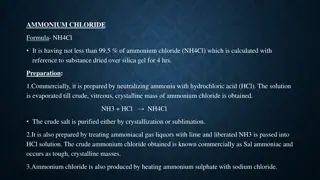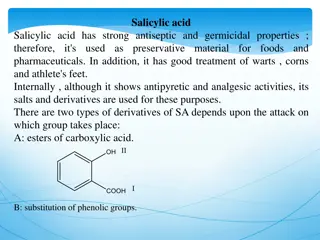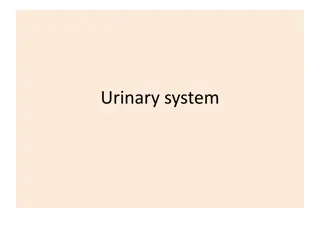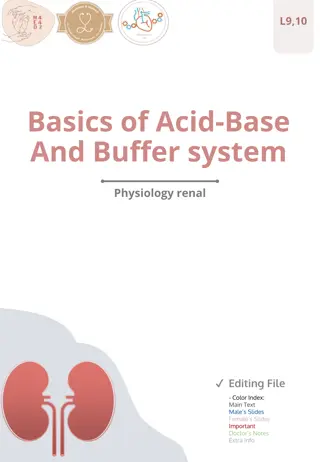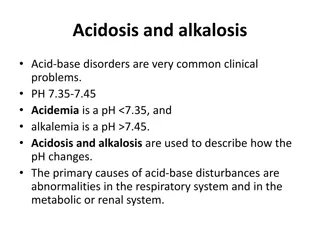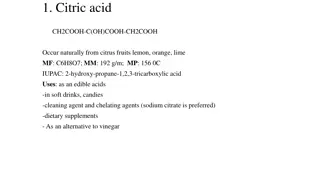Acid base balance
Dive into Hossam Hassan's exploration of acid-base balance in a unique perspective. Uncover insights, perspectives, and analysis in a fresh light. Discover the intricate interplay between acidity and alkalinity in his notable works, offering a distinct viewpoint on this fundamental concept. Gain a deeper understanding of how this balance influences his creative expression and thematic approach.
Uploaded on Feb 24, 2025 | 3 Views
Download Presentation

Please find below an Image/Link to download the presentation.
The content on the website is provided AS IS for your information and personal use only. It may not be sold, licensed, or shared on other websites without obtaining consent from the author.If you encounter any issues during the download, it is possible that the publisher has removed the file from their server.
You are allowed to download the files provided on this website for personal or commercial use, subject to the condition that they are used lawfully. All files are the property of their respective owners.
The content on the website is provided AS IS for your information and personal use only. It may not be sold, licensed, or shared on other websites without obtaining consent from the author.
E N D
Presentation Transcript
Acid base balance Hossam hassan
objectives 1. Describe the physiology involved in the acid/base balance of the body. 2. Compare the roles of PaO2, pH, PaCO2 and Bicarbonate in maintaining acid/base balance. 3. Review causes and treatments of Respiratory Acidosis, Respiratory Alkalosis, Metabolic Acidosis and Metabolic Alkalosis. 4. Identify normal arterial blood gas values and interpret the meaning of abnormal values.
OBJECTIVES CONTINUE 5. Interpret the results of various arterial blood gas samples.
Introduction Venous blood gas analysis is an essential part of diagnosing and managing a patient s acid-base balance. The usefulness of this diagnostic tool is dependent on being able to correctly interpret the results.
in This presentation we will examine the components of an venous blood gas and what each component represents and interpret these values in order to determine the patient s condition and treatment.
Acid-Base Balance The pH is a measurement of the acidity or alkalinity of the blood. It is inversely proportional to the number of hydrogen ions (H+) in the blood. The more H+ present, the lower the pH will be. Likewise, the fewer H+ present, the higher the pH will be.
The normal blood pH range is 7.35 to 7.45. In order for normal metabolism to take place, the body must maintain this narrow range at all times.
When the pH is below 7.35 blood is said to be acidic Changes in body system functions that occur in an acidic state include a decrease in the force of cardiac contractions, a decrease in the vascular response to catecholamines.
When the pH is above 7.45, the blood is said to be alkalotic. An alkalotic state interferes with tissue oxygenation and normal neurological and muscular functioning.
Significant changes in the blood pH above 7.8 or below 6.8 will interfere with cellular function, and if uncorrected, will lead to death . So how is the body able to self-regulate acid-base balance
The Respiratory Buffer Response A normal by-product of cellular metabolism is carbon dioxide (CO2). CO2 is carried in the blood to the lungs, where excess CO2 combines with water (H2O) to form carbonic acid (H2CO3)
The blood pH will change according to the level of carbonic acid present. This triggers the lungs to either increase or decrease the rate and depth of ventilation until the appropriate amount of CO2 has been re-established. Activation of the lungs to compensate for an imbalance starts to occur within 1 to 3 minutes.
The Renal Buffer Response In an effort to maintain the pH of the blood within its normal range, the kidneys excrete or retain bicarbonate (HCO3-). As the blood pH decreases, the kidneys will compensate by retaining HCO3- and as the pH rises, the kidneys excrete HCO3- through the urine
Acid-Base Disorders Respiratory acidosis is defined as a pH less than 7.35 with a PaCO2 greater than 45 mm Hg. Acidosis is caused by an accumulation of CO2 which combines with water in the body to produce carbonic acid, thus, lowering the pH of the blood.
Causes of Respiratory acidosis Central nervous system depression related to head injury ,or to medications such as narcotics, sedatives, or anesthesia Impaired respiratory muscle function related to spinal cord injury, neuromuscular diseases,or neuromuscular blocking drugs
Causes of Respiratory acidosis Pulmonary disorders such as atelectasis, pneumonia, pneumothorax, pulmonary edema, or bronchial obstruction Massive pulmonary embolus Hypoventilation due to pain, chest wall injury/deformity, or abdominal distension
The signs and symptoms of respiratory acidosis Pulmonary symptoms include; dyspnea, respiratory distress, and/or shallow respirations. Nervous system manifestations include; headache, restlessness, and confusion. If CO2 levels become extremely high, drowsiness and unresponsiveness may be coma. Cardiovascular symptoms include; tachycardia and dysrhythmias.
Respiratory Alkalosis Respiratory alkalosis is defined as a pH greater than 7.45 with a PaCO2 less than 35 mm Hg. Any condition that causes hyperventilation can result in respiratory alkalosis. These conditions include:
Respiratory Alkalosis Psychological responses, such as anxiety or fear Pain Increased metabolic demands, such as fever, sepsis, pregnancy, or thyrotoxicosis Medications, such as respiratory stimulants. Central nervous system lesions
Signs and symptoms of respiratory alkalosis Nervous system alterations include light-headedness, numbness and tingling, confusion, inability to concentrate, and blurred vision. Cardiac symptoms include dysrhythmias and palpitations. Additionally, the patient may experience dry mouth, diaphoresis, and tetanic spasms of the arms and legs.
Metabolic Acidosis Metabolic acidosis is defined as a bicarbonate level of less than 22 mEq/L with a pH of less than 7.35. Metabolic acidosis is caused by either a deficit of base in the bloodstream or an excess of acids, other than CO2. Diarrhea and intestinal fistulas may cause decreased levels of base.
Diagnosis of Specific Causes of Primary Acid-Base Disturbance A- Metabolic Acidosis: The Anion Gap AG = Na (Cl + HCO3) MUDPILES: Methanol Uremia Diabetic ketoacidosis Parakdehyde, phenformin Iron, isoniazid, inhalants Lactic acidosis Ethylene glycol, ethanol (alcoholic ketoacidosis) Salicylates, solvents, starvation ketosis
Normal Anion gap metabolic alkalosis HARDUP H yperelemintationTPN A cetazolamide R enal tubular Acidosis type 1,2,and 4 D iarhea U retroentestinal fistula P ancraeticoduodenal fistula
Symptoms of metabolic acidosis Nervous system manifestations include headache, confusion, and restlessness progressing to lethargy, then stupor or coma. Cardiac dysrhythmias are common and Kussmaul respirations occur in an effort to compensate for the pH by blowing off more CO2. Warm, flushed skin, as well as nausea and vomiting are commonly noted.
Metabolic Alkalosis Metabolic alkalosis is defined as a bicarbonate level greater than 26 mEq/liter with a pH greater than 7.45. Either an excess of base or a loss of acid within the body can cause metabolic alkalosis.
Metabolic Alkalosis Excess bas occurs from ingestion of antacids, excess use of bicarbonate, or use of lactate in dialysis. Loss of acids can occur secondary to protracted vomiting, gastric suction,hypochloremia, excess administration of diuretics, or high levels of aldosterone.
Components of the Arterial Blood Gas pH Measurement of acidity or alkalinity, based on the hydrogen (H+) ions present. The normal range is 7.35 to 7.45 PaO2 The partial pressure of oxygen that is dissolved in arterial blood. The normal range is 80 to 100 mm Hg.
Components of the Blood Gas SaO2 The arterial oxygen saturation. The normal range is 95% to 100%. PaCO2 The amount of carbon dioxide dissolved in arterial blood. The normal range is 35 to 45 mm Hg.
Components of Blood Gas HCO3 The calculated value of the amount of bicarbonate in the bloodstream. The normal range is 22 to 26 mEq/liter B.E. The base excess indicates the amount of excess or insufficient level of bicarbonate in the system. The normal range is 2 to +2 mEq/liter. (A negative base excess indicates a base deficit in the blood.)
Steps to an Arterial Blood Gas Interpretation Step One Assess the pH to determine if the blood is within normal range, alkalotic or acidotic. If it is above 7.45, the blood is alkalotic. If it is below 7.35, the blood is acidotic.
Step Two If the blood is alkalotic or acidotic, we now need to determine if it is caused primarily by a respiratory or metabolic problem. To do this, assess the PaCO2 level. Remember that with a respiratory problem, as the pH decreases below 7.35, the PaCO2 should rise.
If the pH rises above 7.45, the PaCO2 should fall. Compare the pH and the PaCO2 values. If pH and PaCO2 are indeed moving in opposite directions, then the problem is primarily respiratory in nature.
Step Three Finally, assess the HCO3 value. Recall that with a metabolic problem, normally as the pH increases, the HCO3 should also increase. Likewise, as the pH decreases, so should the HCO3. Compare the two values. If they are moving in the same direction, then the problem is primarily metabolic in nature. The following chart summarizes the relationships between pH, PaCO2 and HCO3.
Step 4-5: Is there appropriate compensation? Is it chronic or acute? Respiratory Acidosis Acute: for every 10 increase in pCO2 -> HCO3 increases by 1 and there is a decrease of 0.08 in pH MEMORIZE Chronic: for every 10 increase in pCO2 -> HCO3 increases by 4 and there is a decrease of 0.03 in pH
Respiratory Alkalosis Acute: for every 10 decrease in pCO2 -> HCO3 decreases by 2 and there is a increase of 0.08 in PH MEMORIZE Chronic: for every 10 decrease in pCO2 -> HCO3 decreases by 5 and there is a increase of 0.03 in PH
Step 4-5: Is there appropriate compensation? Is it acute or chronic ? Winter s formula: pCO2 = 1.5[HCO3] + 8 2 MEMORIZE If serum pCO2 > expected pCO2 -> additional respiratory acidosis Metabolic Alkalosis For every 10 increase in HCO3 -> pCO2 increases by 6 Metabolic Acidosis
Example 1 Sultana is a 45-year-old female admitted to the nursing unit with a severe asthma attack. She has been experiencing increasing shortness of breath since admission three hours ago. Her arterial blood gas result is as follows
pH 7.22 PaCO2 5 HCO3 18
Follow the steps: 1. Assess the pH.It is low (normal 7.35-7.45); therefore, we have acidosis. 2. Assess the PaCO2. It is low (normal 35-45) and in the same direction of the pH. 3. Assess the HCO3. It is low.in the same direction of PH. the normal range (22-26).
Example 2 Amjad is a 55-year-old male admitted to your DEM with a recurring bowel obstruction. He has been experiencing intractable vomiting for the last several hours despite the use of antiemetics. Here is his arterial blood gas result:
pH 7.50 PaCO2 51 HCO3 33
Follow the three steps again: 1. Assess the pH.It is high (normal 7.35- 7.45), therefore, indicating alkalosis. 2. Assess the PaCO2. It is high the normal range (normal 35-45). 3. Assess the HCO3. It is high (normal 22- 26) and moving in the same direction as the pH.
Example 3 Adel is admitted to the hospital. He is a kidney dialysis patient who has missed his last two appointments at the dialysis center. His arterial blood gas values are reported as follows:
pH 7.32 PaCO2 35 HCO3 18
Example 4 SARA is a patient with chronic COPD being admitted for surgery. Her admission lab work reveals an arterial blood gas with the following values:
pH 7.27 PaCO2 55 HCO3 30
Example 5 Abdullah is a trauma patient with an altered mental status. His initial arterial blood gas result is as follows:
pH 7.20 PaC02 62 HC03 28
Example 6 LAMA is a 54-year-old female admitted for an ileus. She had been experiencing nausea and vomiting. An NG tube has been in place for the last 24 hours. Here are the last ABG results:







